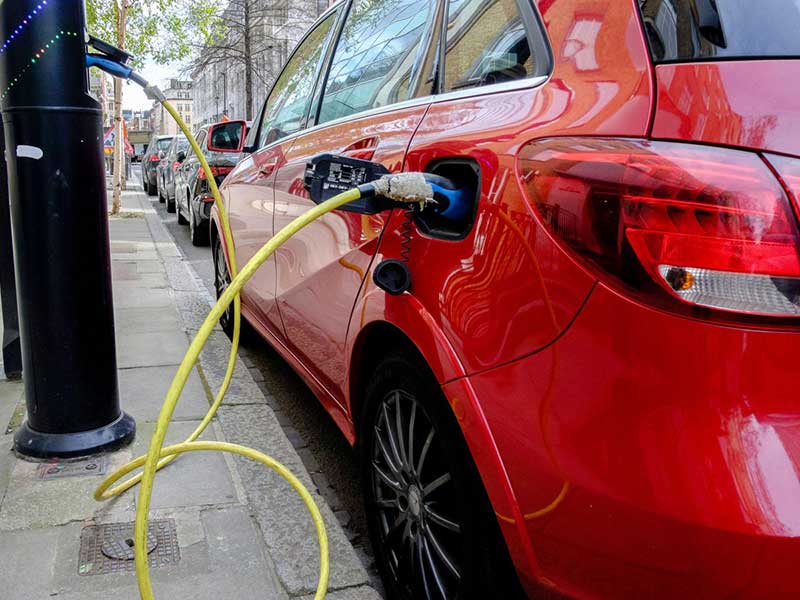The Driver and Vehicle Licensing Agency (DVLA) has published its 2024‑25 accounts.
Here we share highlights from the Comptroller and Auditor General’s Section 2 report on DVLA’s assessment, collection and proper allocation of Vehicle Excise Duty (VED). You can read the full report in context in the DVLA’s annual report and accounts.
Background
The Driver and Vehicle Licensing Agency (DVLA) is responsible for the collection of Vehicle Excise Duty (VED) on behalf of HM Treasury which is payable to the Consolidated Fund. VED is a tax which must be paid for most types of vehicles used (or kept) on public roads in the United Kingdom.
Following an increase in 2023-24, revenue from VED continued to rise in 2024-25. VED revenue was reported as £8.4 billion in the 2024-25 DVLA Trust Statement, £0.5 billion (7%) higher than 2023-24. This increase arose due to the annual uplift in VED rates and a higher number of licensed vehicles over the year. DVLA also collected £110 million in fines and penalties relating to VED, up from £100 million in 2023-24.
Scope of my audit work
Section 2 of the Exchequer and Audit Departments Act 1921 permits me to report to Parliament having examined:
- the VED revenue accounts (reported in the DVLA Trust Statement) in order to ascertain whether adequate regulations and procedures are in place, and being duly carried out, to secure an effective check on the assessments, collection, and proper allocation of revenue; and
- the correctness of the sums brought to account in those accounts.
This year I have also examined two specific areas relevant to DVLA’s management of VED collection, which are:
- the outcome of DVLA’s 2022-2025 compliance and enforcement strategy and development of its next strategy for 2025-2028; and
- DVLA’s preparation for the removal of VED exemptions for zero-emission vehicles from 1 April 2025.
Key findings
Our findings are summarised below. For the context and evidence behind them, see the C&AG’s full report.
Assessment and proper allocation of VED revenue
- My examination shows DVLA’s controls in respect of the assessment, collection and proper allocation of revenue remain adequate and that they are operating effectively.
DVLA’s approach to compliance and enforcement
- There are high levels of compliance with paying VED.
- DVLA does not have a current estimate of how much VED revenue is being lost to the taxpayer through non-compliance.
- DVLA does not have a full understanding of whether its compliance and enforcement actions are cost-effective.
- DVLA estimates that it has met its overall target of maintaining compliance at 2022 levels but does not know how each of the actions from its strategy have contributed to this.
- DVLA is currently developing its next compliance and enforcement strategy but there are areas it has yet to address in its approach that would improve its effectiveness.
Removing the VED exemption for zero-emission vehicles
- DVLA’s communications campaign increased the awareness of most owners that zero-emission vehicles would need to start paying VED from April 2025.
- DVLA delivered the changes to its systems that it needed for enacting the removal of the VED exemption for zero-emission vehicles by 31 March 2025.
- Almost a quarter of zero-emission vehicles had their VED renewed early to delay paying the new rate, with a 1,400% increase in renewals compared with the previous year.
Conclusion
In respect of my core statutory responsibilities, I conclude that DVLA’s controls over its most core responsibilities of properly assessing, collecting and allocating tax revenue remain adequate and that the relevant DVLA systems and procedures have operated effectively during the reporting period.
However, I note in respect of my wider remit to consider issues around DVLA’s management of VED that DVLA could have done more to foresee the behavioural change that would occur around changes in the removal of the VED exemptions so this could have been used to properly inform HM Treasury decision making. There are also steps that DVLA can take in how it reports the cost of non-compliance and to develop an effective compliance and enforcement strategy, taking an approach that is proportionate and cost-effective for the expected rate of non-compliance. I make the following recommendations.
Recommendations
For DVLA and DfT
I recommend that DVLA and DFT develop a long-term approach for estimating reliably the cost of VED non-compliance to help DVLA target and deliver enforcement and compliance activity more cost-effectively and to enhance Parliamentary visibility of revenue lost to the taxpayer. This should include considering a range of options as to how they might achieve this.
For DVLA
I recommend that, until a long-term solution is put into place, DVLA use the data it holds to produce the best estimate it can of the cost of VED non-compliance for reporting next year and include any limitations of its estimate in its reporting.
I recommend that as part of developing and implementing its next compliance and enforcement strategy, DVLA:
- collect all relevant cost data on its compliance and enforcement activities to assess whether its current compliance and enforcement activities are cost-effective and proportionate;
- undertake a full evaluation of its performance and outcomes achieved against its 2022-2025 strategy and incorporate relevant findings into its plans for future activities;
- explore potential wider behaviour trends that might affect VED revenue, for example understanding why the number of vehicles that have a Statutory Off-Road Notification (SORN) continues to increase; and
- explore a wider range of options to innovate and further improve VED compliance and enforcement, for example in how it may use new technologies; this could include engagement with other organisations, both government and private sector, that collect revenue to ensure that up-to-date best practice is considered.
Links to accounts
DVLA Annual Report and Accounts 2024-25
- C&AG’s Section 2 report (pages 110 to 126)

